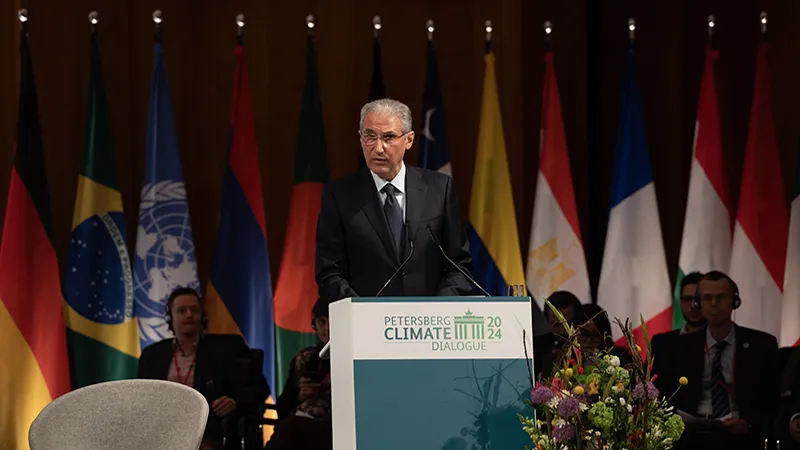Last year, research by ShareAction revealed just a quarter of the world’s 77 largest asset managers had made commitments on tackling deforestation. This alarming statistic speaks to the lack of urgency around tackling deforestation, with investors contributing to climate change and significant biodiversity loss.
Investors, therefore, must commit to further action to progress towards deforestation-free targets, urged Dr. Carter Ingram, managing director at Pollination.
For Earth Day, PA Future spoke to Dr. Ingram about how the climate change investment firm strives to tackle deforestation, and how they are collaborating with others to commit to anti-deforestation targets and achieve a more sustainable future.
Where are we currently in terms of policies and companies’ readiness to meet zero deforestation obligations?
Policies such as the EU regulation on deforestation free supply chains for high risk commodities have helped increase importance, urgency and actions on deforestation-free supply chains. A number of companies are taking action and demonstrating leadership on progressing towards their deforestation-free targets.
However, there are still many companies that have not started taking action and there is a lot of work to be done for those who have haven’t starting thinking about how to tackle deforestation.
What is Pollination doing to meet zero deforestation obligations?
We are working globally with our clients to help them develop commitments, strategies, partnerships/collaborations, measurement and management approaches, and financing solutions to reduce greenhouse gas emissions and nature loss resulting from deforestation, in alignment with frameworks such as SBTi, SBTN and the Taskforce on Nature-related Financial Disclosures (TNFD).
What actions can companies take to reduce and address deforestation?
1. Deepen understanding of the risks
This is done by assessing the business practices, developments, and/or supply chains/sourcing locations that are exposed to deforestation. Tools and information such as those provided by Trase, the Accountability Framework, and SBTN High Impact Commodity list can be a useful place to start.
Further, to get company and investor buy-in, it’s important to understand and communicate the potential financial risks of deforestation within a company’s supply chain and operations.
Frameworks such as the TNFD can support an understanding of how nature loss, including forest loss, can create financial risks for an organisation and can help identify the financial opportunities that can emerge from taking actions to reduce nature loss, including deforestation.
2. Implement traceability systems
For operations, supply chains and locations that do have high deforestation risk and exposure, it is important to better understand, monitor and manage the issue. A key starting point is to implement traceability systems which allows a company to trace products in its supply chain to the source. This will increase a company’s ability to assess if deforestation has been associated with key products or practices.
3. Develop and implement deforestation free commitments, strategies and policies
This includes supply chain management and risk management related to forest/nature loss that should be implemented across the organisation. Introducing this helps guide business activities, investment decisions, procurement and sourcing practices, and risk management across the business.
4. Address deforestation with actions tailored to the drivers of deforestation
Traceability and reporting are not enough to reduce deforestation. Companies will have to take actions that actually reduce deforestation in their supply chains.
Companies are using different strategies to do this, including developing value chain partnerships committed to deforestation free sourcing; purchasing from suppliers who are compliant with deforestation free policies and/or who are third party certified with respect to their forest/deforestation practices/policies; and supporting and/or working with governments to implement existing policies and practices.
Increasingly, businesses are engaging with approaches that address local drivers of deforestation. For example, this includes creating landscape scale partnerships and collaborations with other corporates, communities and farmers/producers. This helps diagnose and reduce drivers of deforestation in a specific place with actions and incentives that are just and equitable for Indigenous Peoples and local communities.
Further, companies can advance regenerative agriculture with farmers/producers and provide them with the financial and technical resources they need to adopt deforestation-free approaches.
Identifying the specific strategy and actions a company should take really depends on the drivers and context for deforestation in specific locations, the product/commodity, the type of business/company, and local policy and governance contexts, for example. Whatever strategy is adopted, it is important to regularly monitor and report results related to progress and adaptively manage strategies and approaches along the way.
Where are the challenges and opportunities when educating companies to act against deforestation?
A lot companies and investors feel overwhelmed because they don’t have the information they need to understand deforestation risk within their supply chains or investment. They don’t know where to start and/or, in many cases, don’t know if/where/how they can influence deforestation. Increasingly, there are numerous frameworks and tools to help companies get started and access/analyse the data they need to understand and manage their risks.
Lastly, to commemorate Earth Day, what is one thing you expect/hope investors and stakeholders alike to minimise deforestation?
We all need to make this a priority for the climate, for biodiversity and for our own health, well-being and livelihoods.
Whatever position we are in – as consumers, advisers, investors, corporates or policy makers – we can make decisions that signal a demand for deforestation free products/practices and support the policies, organisations, and businesses who are committed to reducing deforestation.
This story first appeared in our sister publication, PA future.





